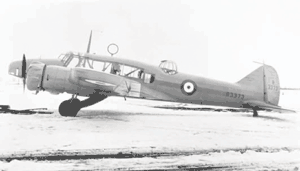
Features
History
A Look Back- Faithful Annie – The Avro Anson
The Avro Anson was the right aircraft at the right time for training badly needed aircrew.
September 28, 2007 By Ray Canon
 It is difficult to say which aircraft Canadians were most likely to see
It is difficult to say which aircraft Canadians were most likely to see
in the skies over Canada during World War II – the Harvard or the Avro
Anson. Both were mainstays of the British Commonwealth Air Training
Plan when large numbers of Commonwealth aviators, and even a few
Americans, trained in this country. The plan also laid the foundation
for similar activities with NATO air forces starting in the 1950s.
Like
the Harvard, the Anson was originally a foreign aircraft, having been
designed in Britain in the 1930s, but unlike the Harvard its initial
purpose was as a commercial airliner. It had little success in that
role, and with the approach of war in the late 1930s it took on a
military presence in the guise of a reconnaissance bomber and training
aircraft.
Although it did some work early in the war in
antisubmarine patrols, it was patently obsolete by that time. To
illustrate, the story is told of an Anson that attacked a British
submarine by mistake. It dropped some bombs on the sub; the result was
to break four light bulbs.
When the first Ansons were employed
in Canada under the BCATP they were aircraft hurriedly sent from
Britain, some with bullet holes still visible in the fuselage and the
mid-upper turret still in place. The holes were plastered over and the
turret was removed soon after the aircraft reached Canadian airfields.
Although
the aircraft was underpowered it was reliable, and such was the demand
for it in the training role that production was soon transferred to
Canada where it was carried out until the end of the war. More than
2,800 Ansons were produced here, the last version to leave the assembly
line being the Mark V. This version differed from the original in
having more powerful engines, but the chief improvement was a switch
from fabric to moulded plywood; this gave it improved performance and,
as one observer put it, “cut down on the number of drafts.” This Mark V
served not only during the war but afterwards; the last one was retired
in 1954.
Its stability and reliability earned it the appellation
of ‘Faithful Annie.’ It was very much the right aircraft at the right
time for training badly needed aircrew.